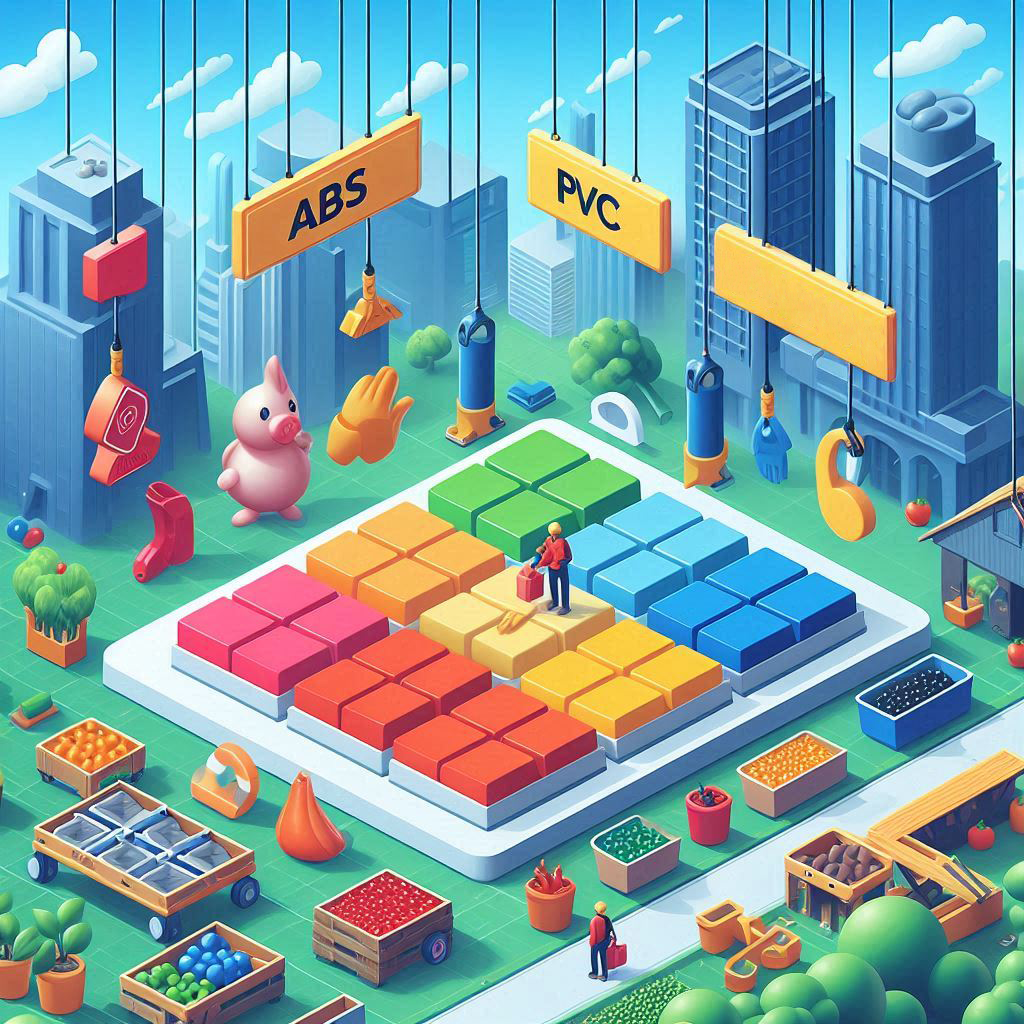Introduction: ABS PVC
Ever stood in a hardware store aisle, staring at the rows of plastic pipes and wonder what the differences are? You’re not alone. With various options available, it can be challenging to choose the right plastic material for your project. Today, we’ll dig deep into the two popular plastics – ABS (Acrylonitrile Butadiene Styrene) and PVC (Polyvinyl Chloride), examining their properties, applications, and how to select the best type for your specific needs.
Understanding the Basics: ABS PVC
Before diving into specifics, let’s get a clear picture of what ABS and PVC really are and why choosing wisely is crucial for your project’s success.
What is ABS?
ABS is a thermoplastic polymer made by polymerizing styrene and acrylonitrile in the presence of polybutadiene. The result is a material that combines the strength and rigidity of acrylonitrile and styrene with the toughness of polybutadiene, making it a robust choice for demanding environments.
- Pros:
- Strong impact resistance
- Good structural strength
- Resistant to physical impacts and corrosive chemicals
- Tolerates a wide temperature range, typically from -20 to 80 degrees Celsius
- Cons:
- Poor resistance to UV exposure
- Can deform under high temperature
What is PVC?
PVC, one of the most commonly produced synthetic plastic polymers, consists primarily of polyvinyl chloride. It is available in two basic forms: rigid (sometimes abbreviated as RPVC) and flexible.
- Pros:
- High durability and long lifespan
- Excellent resistance to oxidation and degradation
- Good choice for applications needing weather resistance
- Inexpensive and widely available
- Cons:
- Not suitable for high temperature exposure; begins to decompose around 140 degrees Celsius
- Contains chlorine and may release harmful fumes when burned
Key Differences and Applications: ABS PVC
Assigning the right material to the right task can save you both time and money. Here’s how ABS and PVC stand apart in practical applications.

Domestic Plumbing
- PVC: Ideal for residential water supply lines due to its tolerance for high water pressure and ease of installation.
- ABS: Commonly used for waste, drain, and vent pipes as it can handle abrasive chemicals and materials found in waste.
Specialized Industrial Use
- PVC: Dominates applications where chemical resistance is needed, such as in chemical processing and wastewater handling.
- ABS: Favored in 3D printing, automotive applications, and refrigeration parts due to its toughness and ability to endure lower temperatures.
Working With ABS PVC
Crafting with these materials doesn’t require special training, but knowing a few handy tips can enhance the outcome significantly.
Bonding and Joining
- PVC: Requires a specific type of glue called PVC cement, which fuses the material, creating strong joints.
- ABS: Joined using either a specialized ABS cement or solvent welding, similar to PVC but specific to ABS.
Cutting and Modifying
Both materials can be cut using a handsaw, circular saw, or even a miter saw. However, it’s essential to invest in sharp, suitable blades designed for cutting plastic to avoid melting or cracking.
Environmental Impact and Sustainability
In today’s eco-conscious world, knowing the environmental impact of the materials you choose is essential.
- PVC: It involves more concerns due to the presence of chlorine, which can produce dioxins when manufactured or disposed of by burning.
- ABS: Though it does not contain chlorine, it is derived from petroleum products, linking it indirectly to fossil fuel consumption and greenhouse gas emissions.
Conclusion
Choosing between ABS and PVC heavily depends on your project’s specific requirements—environment, exposure to elements, and stress factors. ABS offers superior impact resistance and durability at lower temperatures, making it ideal for specialized applications, while PVC provides a robust and cost-efficient solution for traditional plumbing needs.
Remember: Always consider the environmental implications and the long-term performance of the materials you choose. Your wise decision today can lead to a sustainable, successful project outcome tomorrow.
Next time you face the plumbing aisle’s perplexing choices, recall these insights to confidently make the best decision for your project!
Polyvinyl Chloride Piping: Choosing the Right Size for You





